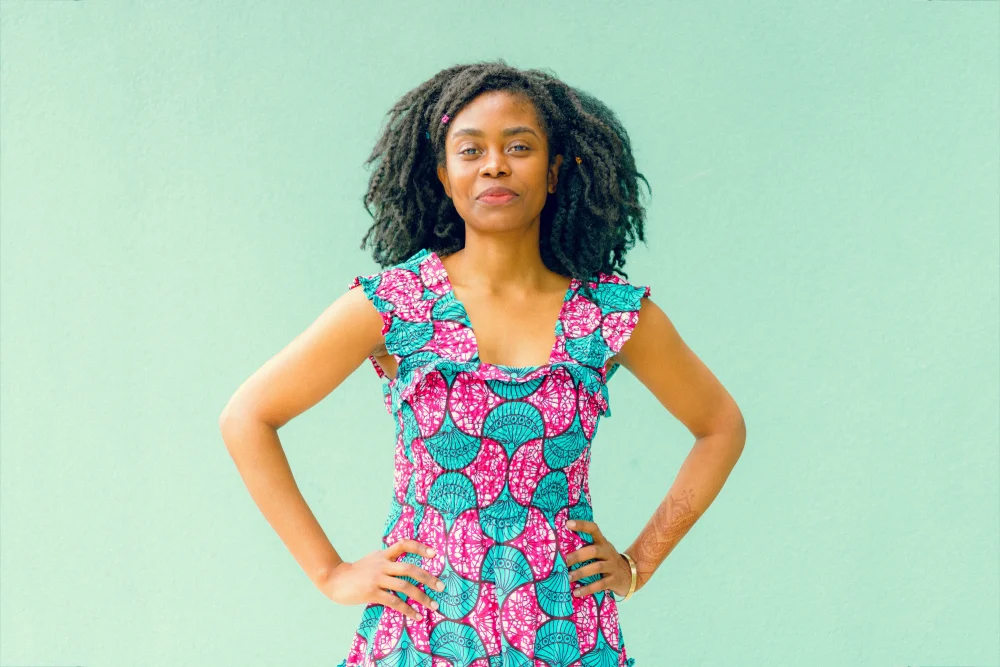CNN
—
Barnett Counts gave birth to four children in the hospital, including surrogate twins, before deciding she was ready for another experience.
Koontz said all of her previous births had been healthy and smooth, but hospital and clinic visits felt rushed, routine and impersonal.
“When you’re in this medical model, there’s all these evaluations and ultrasounds and being told what to do and feeling like you’re being sent back and forth,” Koontz said. “It feels more transactional and less intimate.”
So when Quuntz found out she was pregnant with her fifth child in 2021, she decided to give birth at the Atlanta Birthing Center. She said the facility provided her with the comprehensive, personal and intimate care she craved as a mother and used a water birth to give birth to her son, Hudson.
Koontz said she cherishes the experience so much that she is preparing to give birth to her sixth baby at the same midwifery center in January.
“It’s not just treating expectant mothers,” she told CNN during a mid-November visit at the center. She says, “It’s as if every part of her has space. There’s a level of intimacy that you don’t get in a traditional clinic.”

Koontz is one of a small but growing number of women of color who choose midwifery clinics over traditional medical facilities for prenatal, birth, and postpartum care.
Although the majority of births in the United States still occur in hospitals, the majority of surveys show that in 2020, nearly 2% of people will choose to give birth in a “community birth setting” such as a birth center or home birth. Did. recent data That’s according to the nonprofit National Partnership for Women and Families, which tracked these trends based on birth certificate data.
Between 2019 and 2020, the number of Black women choosing to give birth in these settings increased by 30%, and the number of Native American women increased by 26%, the nonprofit said. The number of Hispanic women choosing to give birth in such settings increased by 24%, and for white women and Asian women by 18%.
Some families have decided to move away from traditional hospital birth settings as they battle a maternal health crisis in which black women are nearly three times more likely to die from pregnancy complications than white women. According to the CDC.
Birth centers are often home-like facilities that offer clients longer appointments and a more free and autonomous birth experience.Designed to care Them According to the American Birth Center Association, women with low-risk pregnancies are prohibited from having C-sections due to state regulations.
“Atlanta Birth Center Executive Director Tamara Tait said: client If there are complications that are beyond the scope of treatment, such as increased blood pressure, breech presentation, or the baby weighing less than gestational age, the baby will be transferred to a local hospital. The birth center also does not provide epidurals or drugs to induce labor, she added.
Tait said birth centers typically have risk assessment criteria to help determine whether it’s safe to give birth at the facility or whether a transfer to a hospital is necessary.
Focus on midwifery center And as maternity wards across the country are closing, many cite low birth rates and lack of funding as the main reasons for the closures.
Centinela Hospital Medical Center in Englewood, Calif., which has a majority black and Hispanic population, closed its maternity ward in October. “Demand for maternal health services at Centinela has decreased significantly in recent years, with fewer than two births per day,” the hospital said in a statement.
Leslie Welch, Co-Founder and Co-Director According to the Birth Center Equity report, birth centers often focus on showing respect for families, building trust, and building bonds, and this is especially true for women of color across the country, especially those with experience. This is what some women want Trauma and racism in healthcare.
according to report The National Partnership for Women and Families said in November that Black women are “more likely to report that a medical professional ignored them, refused their requests for help, or did not respond to a reasonable amount of requests for help.” “Twice as many times as white women” time
Welch said she feels the maternal mortality disparity is another example of the legacy of systemic racism in America.
“This entire country has operated within a hierarchy of human worth based on race,” Welch said. “Our hospitals and health systems are no exception. Survival should be the minimum expectation in maternity care. It’s the least we can do for many families in this country.”
Welch said she plans to open Birth Detroit, the city’s first free-standing birth center led by Black women, in 2024, driven by a desire to address these inequities.

Many birthing centers are designed to provide families with the comforts of home. For example, the delivery room at the Atlanta Birth Center resembles a bedroom with a queen-sized bed, a lamp, paintings on the wall, and a changing table for the baby.
On a recent Friday, Kunz sat leisurely in a light blue velvet chair in a dimly lit room across from her midwife, Anjili Hinman.
“How are you feeling these days?” Hinman asked.
Kunz, who was 32 weeks pregnant, held the side of her stomach and explained to Hinman that it was a good day. She did not have much of her pelvic floor dysfunction and was able to go up and down the stairs in her home without assistance. .
They had a 30-minute conversation about everything from Kuntz’s mental health and work as a chiropractor to his family life, water intake and sleep habits. Once the test was complete, Hinman measured Kunz’s blood pressure and listened to the baby’s heartbeat using a fetal Doppler device.
“I can see them moving,” Hinman said as he moved his hands around Kuntz’s stomach.

Koontz told CNN that it’s these interpersonal moments that make her appointment at the Atlanta Birth Center so unique. She added that the staff is doing everything they can for her physical, mental and emotional health.
Gioia Claire Perry, president and founder of the National Birth Equity Collaborative, said birth centers are becoming more popular because women want to interact with providers who understand their cultural needs. He said he thinks there are.
Clare-Perry said many women of color also choose to give birth in birthing centers to combat the racial bias often experienced in traditional medical facilities.
Breath of My Heart Birthplace has been serving indigenous communities in rural northern New Mexico since 2010. Founder Beata Tsosie She Peña said the facility currently handles about eight births a month, half of them to Native American families. According to the CDC, “American Indian and Alaska Native women twice the probability They die more often from pregnancy-related causes than white women. ”
Tsosie-Peña said she opened the center because she felt the community needed a place to embrace the cultural traditions surrounding childbirth with bilingual staff.
Families giving birth at the center are allowed to perform rituals before and after the birth of their baby, including music, fire, food, herbal medicine and special clothing. Many of these practices may be limited in a hospital setting, she noted.
“When it comes to childbirth, there are many things that different cultures have that make it very special and unique,” Tsosie-Peña said. “I think they focus on the needs of their clients.”

Back in Atlanta, Kuntz said she is looking forward to giving birth in the “fire room” of the Atlanta Birth Center. This is one of her three nature-themed delivery rooms in the facility.
The fire room features a painting of an orange and black tree on the wall, a queen-sized bed with a soft orange and blue comforter, a rocking chair, and a message that says, “Some women are afraid of fire, and some women become fire.” I’m proud of the canvas that says “I’m here.” ”
“It satisfies the need to feel at home, to feel safe, grounded, and protected,” Kounds said. “They have aromatherapy, they have music, they have tapestries, they have words of affirmation. They promote pain coping skills versus drugs.”
Hinman, Koontz’s midwife, said she believes birth centers are part of the solution to the maternal health crisis facing Black women because of their holistic approach.
She said staff closely monitor customers even during the postpartum period, when many staff members face life-threatening complications and depression.
According to a study published in the journal JBI Evidence Synthesis, almost half of maternal deaths occur on the first day of birth. 24% occur between days 2 and 7. 25% from day 8 to day 42.
Hinman says simply checking in with clients can save their lives.
“It feels like family,” Hinman said. “This is a life-changing time for people.”
CNN’s Rikki Klaus contributed to this report.








